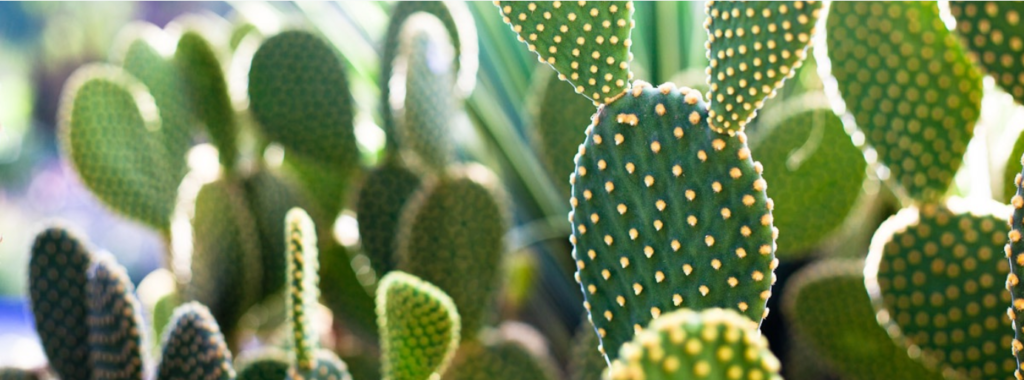Cactus

Cactus (lat. Cactaceae) belongs to the Cactaceae family, represented by perennial flowering plants. The word “cactus” is of Greek origin. Carl Linnaeus introduced this name in 1737 as an abbreviation for “melocactus” (thistle) due to the spines with which representatives of the Cactaceae are covered.
Soil requirements:
loose, air- and moisture-permeable, with a low pH level (not higher than 6.5).
Water:
moderate as soon as the substrate dries. In cold or rainy weather, watering is not carried out even in summer. In winter, many types of cacti are watered once a month or not at all. In the spring, at the first signs of growth, spray the cacti with water, and when they begin to grow, carry out 2-3 lower waterings with water at a temperature of 28˚C to saturate the substrate with moisture. However, keep in mind: such baths are harmful to hairy and woolly species.
Temperature:
in spring and summer – usual for residential premises, in winter cooler conditions are desirable – 6-14 ˚C with regular ventilation and absence of drafts.
Blossom:
depends on the gender.
Transfer:
carried out in the spring, with the beginning of active growth, when the plant’s pot is really small. Young cacti are replanted once a year, and three- to four-year-old cacti – once every few years.
Feeding:
once a week during the period of active growth on pre-moistened soil with a weak solution of a mineral complex for cacti. In winter and during annual transplants into fresh substrate, cacti do not need feeding.
Reproduction:
usually with babies, but you can also use seeds.
Diseases:
dry and black rot, late blight, rhizoctonia, helminthosporosis, fusarium, spotting and viral diseases.
Pests:
mealy root and mealy stembugs (hairy aphids).
Planting cacti:
- a drainage layer and soil are poured into the pot up to the lower edge of the side;
- make a depression in the center of the container;
- install the cactus into the hole, carefully straightening the roots with a thin object;
- the root collar should be level with the ground;
- cover the roots with soil;
- distribute the soil evenly by tapping the pot on a hard surface;
- a layer of pebbles is poured on top to protect the root collar and imitate natural conditions
The most popular types of grown cacti:
- Astrophytum
- Aporocactus lash
- Mammillaria
- Gymnocalycium
- Cereus
- Echinopsis
- Prickly pear cactus

